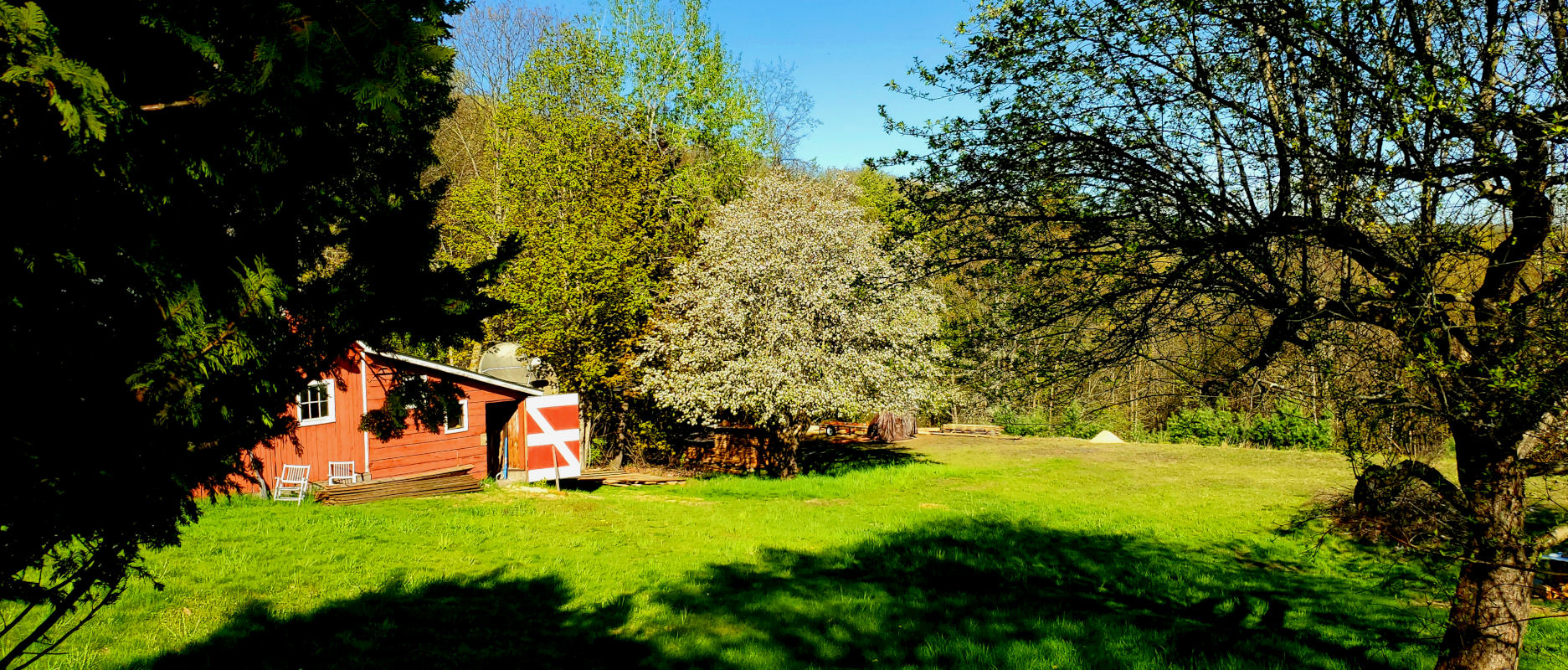We bought our farm in New England in 2019 – right before the pandemic hit. Before that, we lived on five acres in West Virginia, where we were working on building up a large garden, as well as learning to harvest our own firewood. We may have lived there for a while longer, but Rockwool (the company that makes mineral fiber insulation) colluded with the neighboring town’s mayor to secretly contract to build a heavy industry factory that was about two straight miles from our home – and across the street from an elementary school, among other things. We were not having that, so we put our home on the market, and when it sold, we were able to nab our gorgeous 60 acres for a song and a dance, leaving us enough left over to buy some necessary equipment, such as an ATV, a log arch, a sawmill, a new pickup, and assorted farmstead tools.
Moving in and getting settled takes time. In addition to wanting to grow food, we heat our home with wood and thus gather our own firewood. We also need lumber, and we bought the sawmill because the crazy prices of lumber made it so much cheaper to mill it ourselves. So working with firewood and lumber has taken up a lot of out time so far.
In 2022, we’re trying to put more into getting the actual food growing component of our farm going. The actual land we’re converting to farmland was left to grow as a meadow before we moved in, and both because of a couple of boggy patches and because it’s good for pollinating insects and other wildlife, we’re intentionally leaving a couple of large patches of unmanaged meadow. We also have a fire pond, which we’re hoping at some point to stabilize with a liner and keep clean with native water plants and a solar-powered motor to keep the water circulating. The fire pond provides a home for frogs, which we can hear living it up all summer long.
Our goals for our farmstead are:
- Growing our own food
- Contributing to local efforts to ease food insecurity
- Selling produce at farmer’s markets
- (Possibly) selling lumber
- (Definitely) donating lumber to local causes that need it – which we’ve already started doing.
Our land is under a conservation plan in Massachusetts called “Chapter 61.” It eases our tax burden in exchange for keeping our land in a conservation status and being willing to provide lumber via contracts. We do what we can to further those conservation goals by doing things such as using the upper branches of felled trees to build slash piles, which are then used by wildlife for habitat and protection from their predators. Although we need to initially till our farm plots to remove the competitive sod, after that we are all about using the no-till method. We will also be exploring permaculture, hugulculture and possibly a walipini, either as or in addition to a greenhouse.
We aren’t yet the kind of farm where people can come by and buy something, but we’ll definitely keep you posted when we get there. We’re enjoying the journey very much.
About our name: When we were still living in WV and trying to sell our home there, we were on a bit of a roller coaster, as these things sometimes go. We had been talking about what to name our new place, whatever that place happened to be, because we like the idea of giving our place a name. I was outside one day when I found a turkey feather. An idea came to me: we’ll call our new place “(blank) Feathers,” depending on how many turkey feathers I found in our WV yard before we moved. Well, that number was five, and when we found our new place and realized we could make it a full-fledged farm, we named it Five Feathers Farm.
We still have those feathers.
